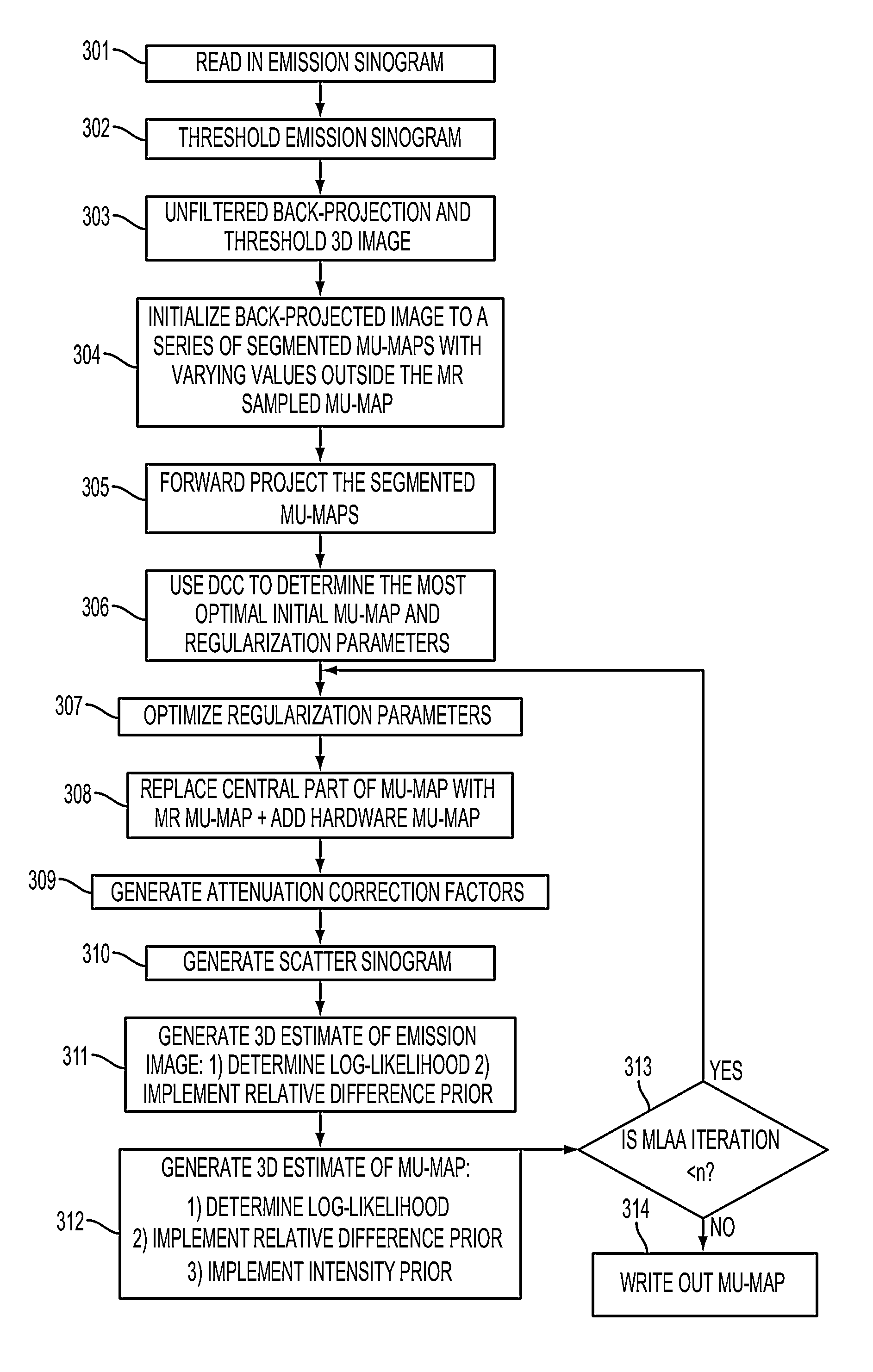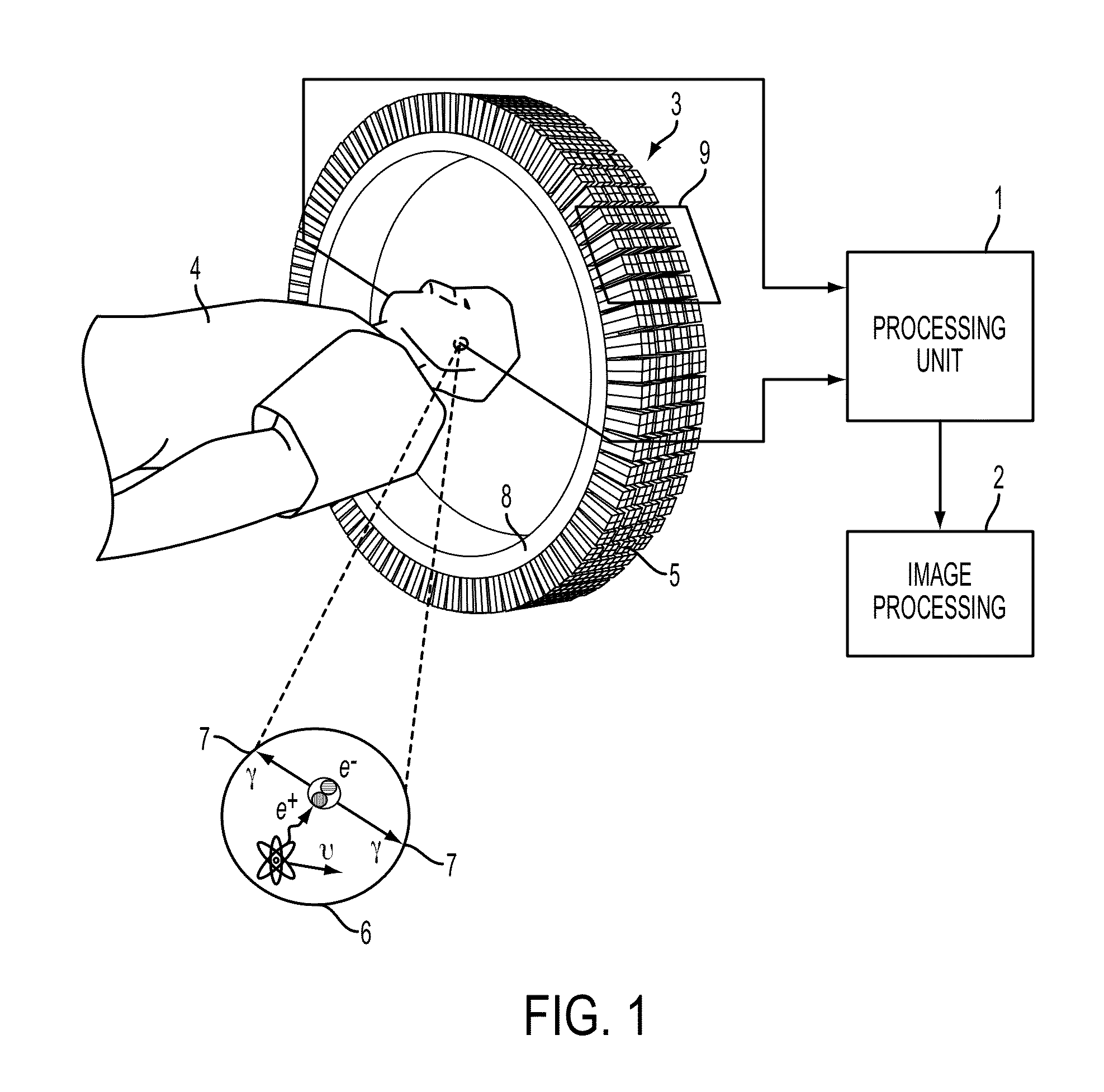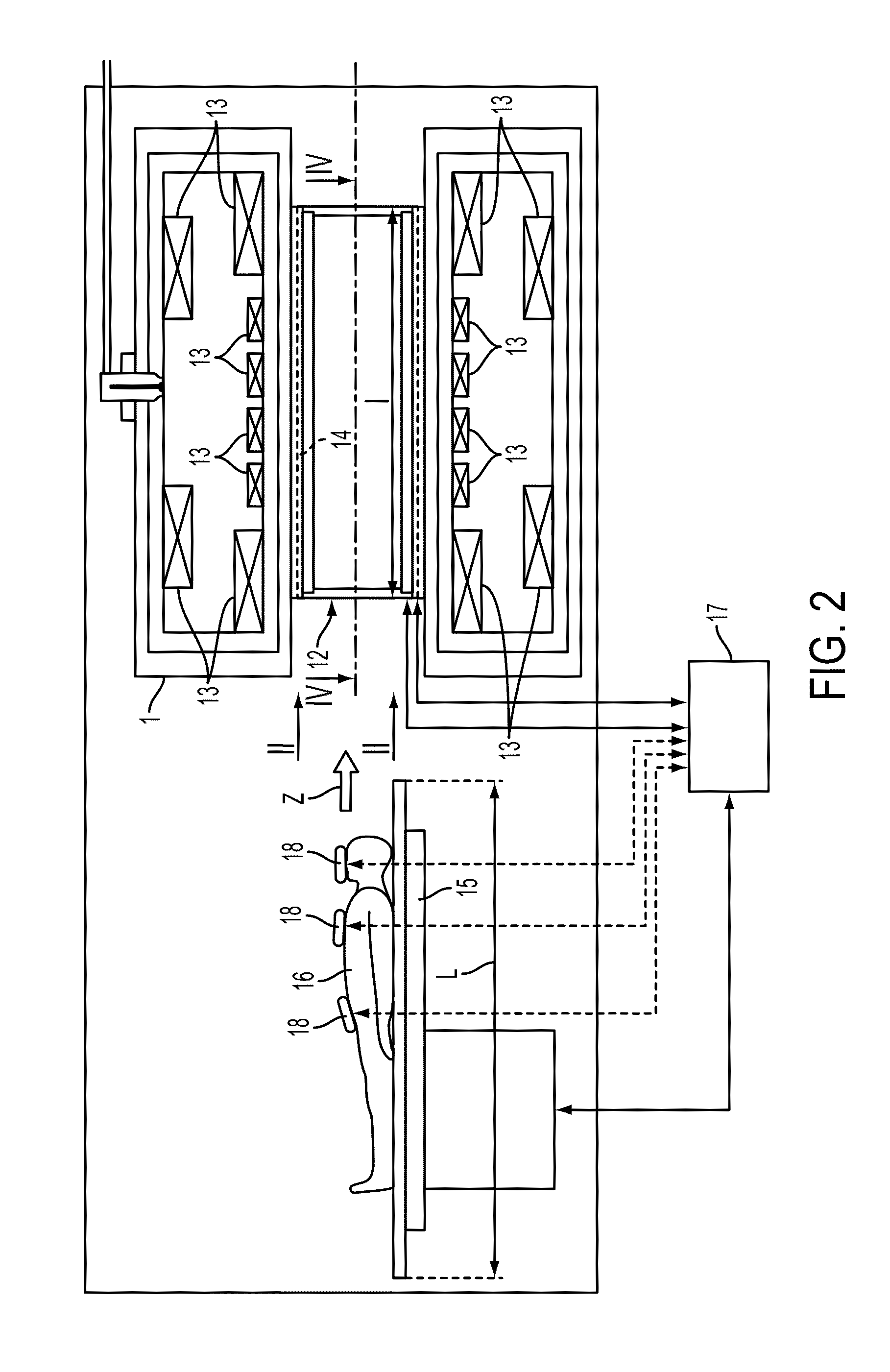Generating Attenuation Correction Maps for Combined Modality Imaging Studies and Improving Generated Attenuation Correction Maps Using MLAA and DCC Algorithms
a combined modality imaging and attenuation correction technology, applied in the field of nuclear medical imaging, can solve problems such as noise estimation of the mlaa-based extended mu-map, and achieve the effect of reducing the noise of the extended mu-map
- Summary
- Abstract
- Description
- Claims
- Application Information
AI Technical Summary
Benefits of technology
Problems solved by technology
Method used
Image
Examples
Embodiment Construction
[0029]Truncation of the arms has been observed in the mu-maps generated by MR / CT imaging modality, especially for large patients. These truncated mu-maps can cause local artifacts in reconstructed PET images. To reduce the local artifacts, the MLAA algorithm is used to estimate the missing regions of the mu-maps using the untruncated PET emission data combined with the truncated MR image. The present invention expands the use of the MLAA algorithm for dynamic and gated MR / PET cardiac studies. The MLAA algorithm uses the measured counts emitted from the areas of the patient that are truncated in the MR images to estimate the missing mu-values. MLAA is a joint estimation algorithm that simultaneously estimates the emission as well as attenuation values using an intensity prior that favors mu-values of air and tissue.
[0030]In gated MR / PET cardiac studies, the PET data is framed into multiple gates and a series of MR based mu-maps corresponding to each gate is generated. The number of P...
PUM
 Login to View More
Login to View More Abstract
Description
Claims
Application Information
 Login to View More
Login to View More - R&D
- Intellectual Property
- Life Sciences
- Materials
- Tech Scout
- Unparalleled Data Quality
- Higher Quality Content
- 60% Fewer Hallucinations
Browse by: Latest US Patents, China's latest patents, Technical Efficacy Thesaurus, Application Domain, Technology Topic, Popular Technical Reports.
© 2025 PatSnap. All rights reserved.Legal|Privacy policy|Modern Slavery Act Transparency Statement|Sitemap|About US| Contact US: help@patsnap.com



